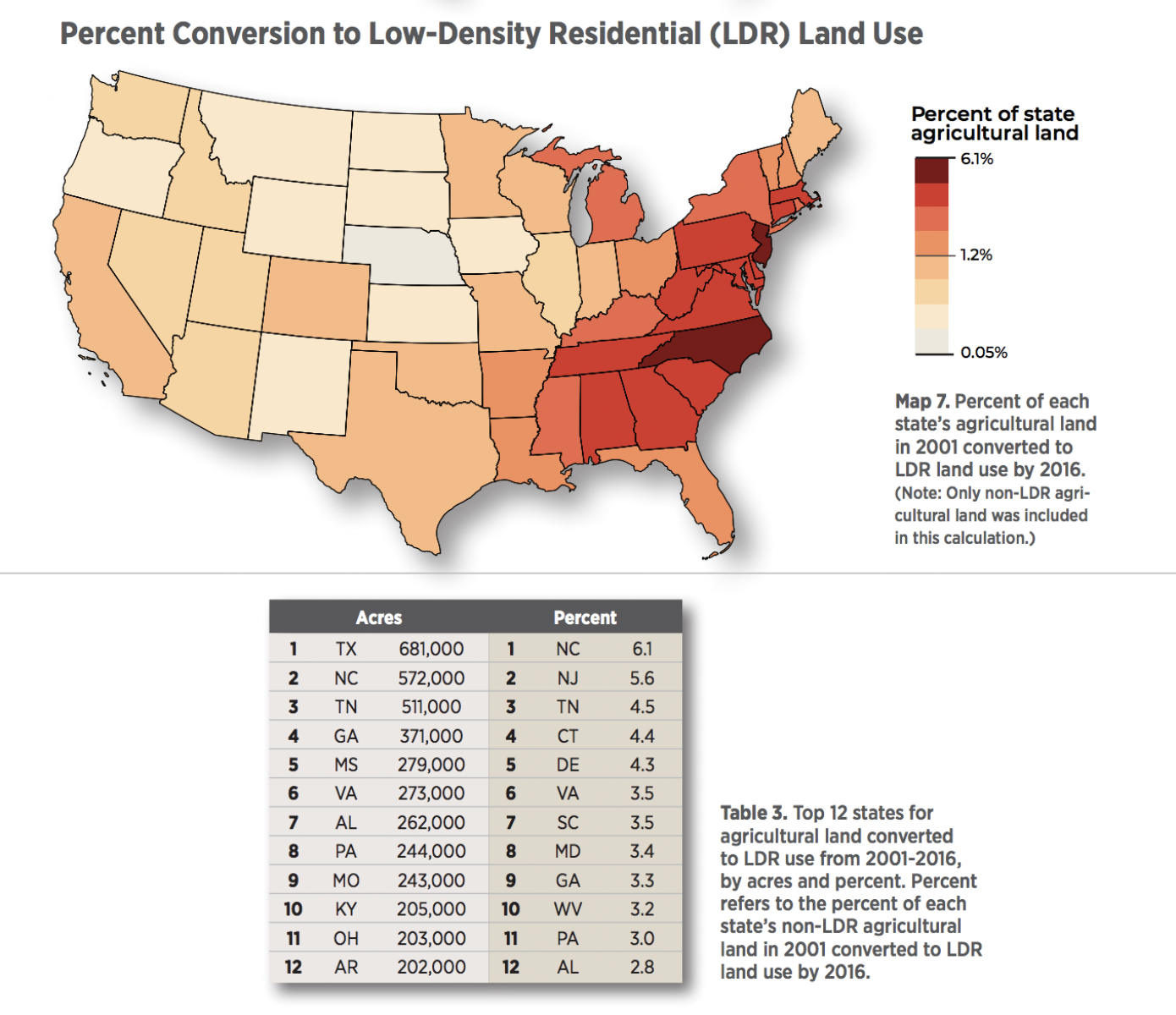Farms Under Threat: The State of the States
The American Farmland Trust (AFT) released a new report that illustrates the state of the nation's agricultural landscape, including the threats confronted by farms in Pennsylvania.
In Pennsylvania alone, agriculture accounts for approximately $84 billion in direct economic output, which supports "more than 280,500 jobs directly and 300,000 jobs indirectly." The report finds, however, that Pennsylvania ranks 12th nationwide for threats facing working farms. Indeed, the state ranked 8th nationally for converting agricultural land to low-density housing (LDH). Between 2001 and 2016, 347,000 acres of Pennsylvania's farmland was lost, in large part due to housing development.
As the report notes, state policies can help preserve agriculture in low-density residential regions and reduce the risk of urban housing development. The report cites "land use policies that encourage compact development, such as area-based allocations and sliding scale zoning, [that] can protect large contiguous blocks of agricultural land even when average housing density increases." States can also adopt Purchase of Agricultural Conservation Easement (PACE) programs to preserve farmland by compensanting landowners for surrendered development rights. The report directly cites Pennsylvania's PACE program and its variety of local land-use policies. In fact, Pennsylvania buys an average of 175 easements yearly.
The report also cites Pennsylvania's recent adoption of "an exemption from the state’s realty transfer tax if a protected farm is conveyed to a beginning farmer." States with PACE programs could adopt a similar policy.
Overall, though, the growth of large residential subdivisions remains a threat in Pennsylvania---especially in a rich agricultural region like Lancaster County.
Read the full report here.
Findings:
- Low-Density Residential (LDR) land use paves the way to urbanization.
- Between 2001 and 2016, 244,000 acres of agricultural land in Pennsylvania was converted to LDR use.
- 3 percent of Pennsylvania's non-LDR land in 2001 was converted to LDR land use by 2016.
Read the full report here.





